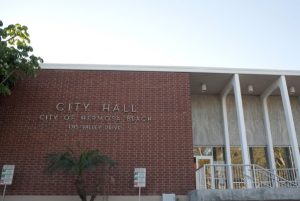
In my last blog post, I wrote about my graduate internship with the City of Hermosa Beach and the South Bay Cities Council of Governments (COG), and my evolution into a “Huge Policy Wonk” (HPW). I’ve since finished the internship and begun my thesis.
Motivated by my work with Hermosa, I decided to do my thesis on greenhouse gas accounting methods. I surprised myself by choosing this topic. I’m not quantitatively inclined and usually make every effort to avoid anything accounting related. During my one accounting class as an undergrad, I became so viscerally averse to the subject that my reaction might have been called “instant nausea.” So, why did I voluntarily subject myself to this topic, you ask? Well, it was my internship with Hermosa.
Accounting Pepto Bismol
At Hermosa, my job was to develop an inventory methodology and then create a 2015 GHG municipal inventory. Given that I had no experience in GHG accounting, this was substantially challenging. All I had to help me with this daunting task was the 2012 Municipal Report (completed by outside consultants) and exuberance motivated almost entirely by naiveté. So, I put on my detective hat, dove headfirst into the methods section—and didn’t come out until about a month later.
As challenging as it was, dissecting the methodology of an entire report was perhaps the most expansive learning experience I’ve ever had. I didn’t realize at the time, but I was learning about the foundation of climate policy and decision making. Among many things, it taught me how GHGs are distributed throughout the operations of an organization, and then the process of gathering data and translating it into actionable information.
The most unexpected thing I learned, however, is that accounting can be interesting! Well, maybe not accounting itself, but the implications of accounting. Having to dissect and then recreate the inventory taught me the methodology behind constructing knowledge and, therefore, how it directly dictates action.
Return of the Nausea

While I was deep in the relevant literature on GHG accounting, I came in contact with Chris Jones, a Berkeley professor who’s an expert in the field. He sent me a bunch of articles, told me about current state of GHG accounting, and pointed me in the direction of several different accounting methods.
The most common method for GHG accounting—also the method used by Hermosa—is called production-based accounting. Production-based accounting only captures emissions emitted directly within a given boundary. Another method I came across is consumption-based accounting. This method accounts for the emissions across the lifecycle of a good or service and then attributes the emissions to the point of consumption.
Cities are either a net producer, net consumer, or trade-balanced. A net producer is defined as a city that has more production-based emissions than consumption-based emissions; a net consumer is the opposite. Trade-balanced cities are balanced between the two. Typically, industrial cities are net producers and residential cities are net consumers. Hermosa is almost entirely residential.
Through this research, I learned that because the City of Hermosa applied only production-based accounting, it only captured a minority of total emissions and had a gap in its GHG accounting methods. The solution may be for the city inventory using multiple accounting methods to capture a larger scope of emissions, and I’ve come across research that advocates this approach.
Now with my internship over, it’s just me, my laptop, and my thesis. What will happen next? No one knows for sure. Maybe everything I’ve learned in the classroom and workplace will come together in a masterful study of GHG accounting methods to be forever remembered in Bard CEP lore (unlikely). Maybe my enthusiasm for accounting was premature and my previous disdain/nausea for the subject will return with greater force than ever (more likely). Only time will tell.
